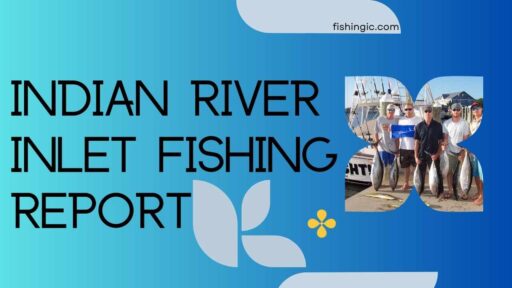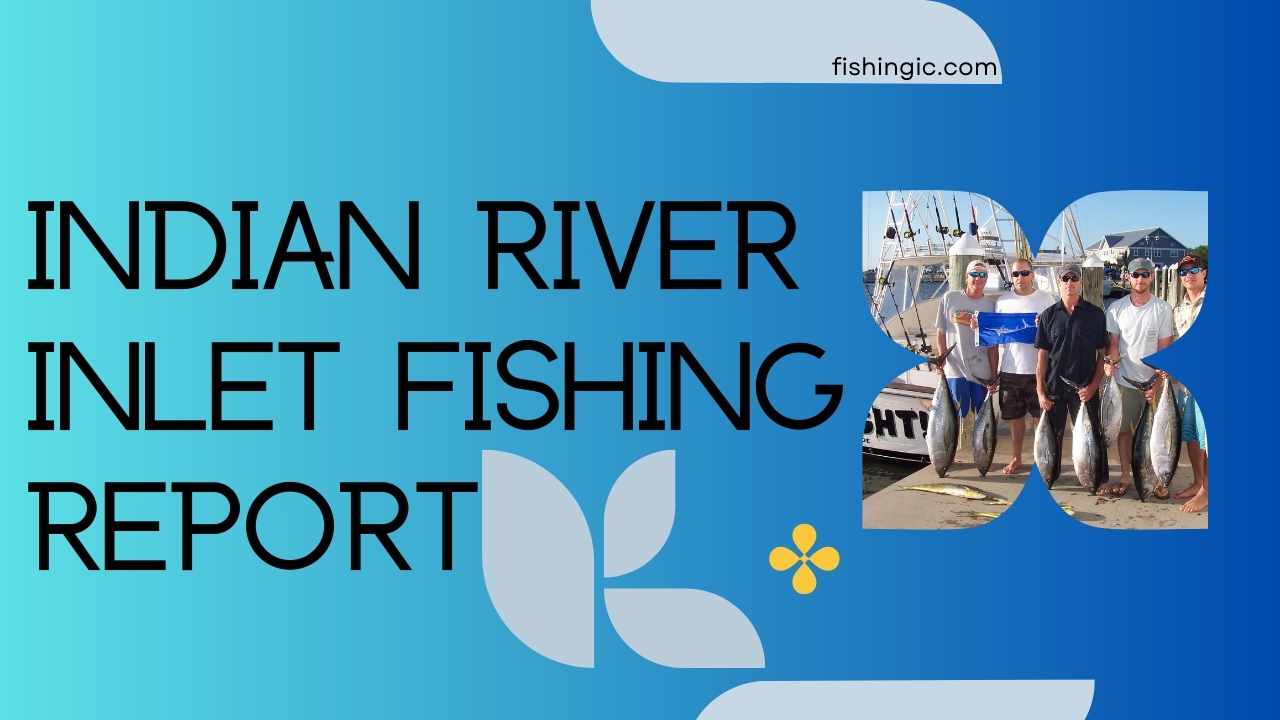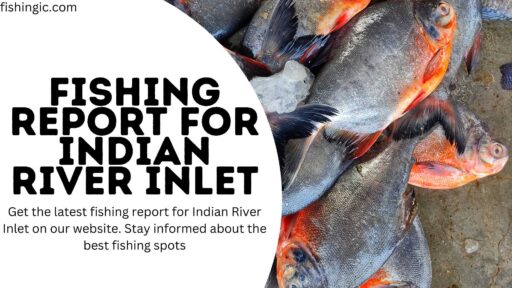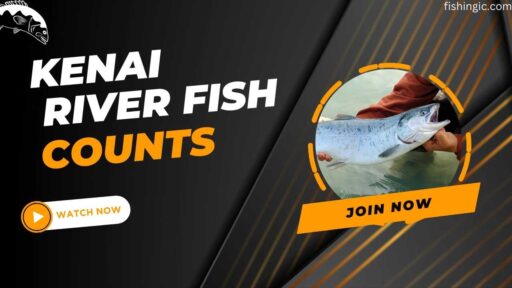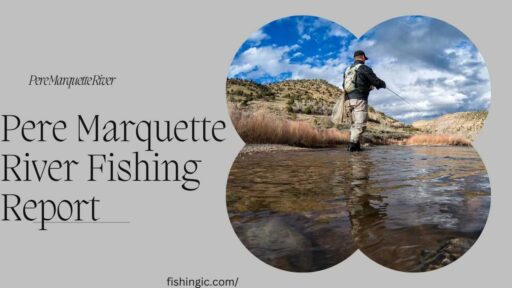Indian River Inlet Fishing Report in Delaware is a fishing paradise for thrill-seekers and those looking to return home with their arms full. This inlet teems with many types of fish. It’s surrounded by the untouched beauty of the Delaware coast. This beauty attracts anglers from across the country.
Whether you are a local or a visitor, this detailed guide will help you have a successful day at the Indian River Inlet Fishing Report ground. From current conditions to favorite spots, we will cover everything that you need to know before making your cast.
The Indian River Inlet Fishing Report
As a devoted angler, I recognize the significance of keeping up with recent fishing reports. It provides me with useful information about the present situation on any given body of water helping me to plan my trips better. This detailed guide will reveal the most recent Indian River Inlet fishing report. It has all the details you need before your trip to this famous fishing hole.
Why should one keep fishing reports updated?
So, it’s vital for anglers to stay updated on the fishing reports. Reports tell them about the current weather, like tide level and water temperature. With this understanding, you can choose the best technique based on factors like timing. An outing’s records often include things like when different species are in season. This helps those who want only specific types.
Understanding Fishing Conditions in Indian River Inlet Fishing Report
This place has diverse types of fish, luring people across boundaries for their livelihoods in ice fishing. Knowing the unique aspects of these waters would let anyone get the most enjoyment out of their favorite activity: catching fish! This document will also reveal the temperature of the water. It can affect how active fishes are. Water temperature varies at different times during the year. For example, it gets colder in the winter and warmer than usual in the summer at Indian River Inlet.
Seasonal Shifts: A Look at the Indian River Inlet Fishery Throughout the Year
There are also exciting fluctuations in the fishery of this inlet with every season. Let’s now move on to what an angler can expect throughout the year:
Spring (March-May)
- Spring Migration: Migratory species like striped bass begin their trek north through the inlet in Spring. Trolling live bait along the jetties or casting lures may produce results at this season.
- Flounder Frenzy: During Spring, flounder, a highly prized flatfish, becomes active in back bays and near the inlet. Using bait or jigs on the bottom could provide good catches.
- Black Drum Boom: Black drum are another sought-after fish. They are available in Spring and make loud drumming sounds when caught. They can be found around structures and trays with particular baits to target them for great experience.
Summer (June-August)
Shark Season starts in summer. It brings various sharks, such as sandbar, blacktip, and hammerheads. Charter boats offering shark fishing make for truly thrilling experiences.
Pelagic Parade: Pelagic species such as dolphin fish-mahi mahis- wahoo and cobia come closer to our shores during summer months. Offshore trolling or fishing on structure inlets will pay off well.
The bottom fish are active near jetties and rocky areas all summer. They include sea bass, blackfish (tautog), and triggerfish. Bottom fishing with varied rigs and baits can be productive.
Fall (September-November)
Fall Run: Striped Bass make their way back down during this time of year. Trolling, jigging, or live bait in the vicinity of the inlet will work exceptionally well at certain times of the year.
Flounder Farewell: This species is still very active during autumn but slows down as winter approaches. You may seek them in the back bays or around the inlet by using bait or jigs.
Cobia Calling: Cobia will still be available in the fall. You can spot them by trolling near structures and current breaks.
Winter (December-February)
- Sheepshead Season: Sheepshead fish that look very different from others become more active in winter near structures. When targeting them, live shrimp or fiddler crab bait has been found to be effective.
- Bottom Bounty: Fishing for bottom species like sea bass and tautog(blackfish) remains a possibility all through winter although maybe slower than other seasons.
A Bounty of Species: Unveiling Indian River Inlet’s Fishery (March 2024 Update)
The inlet at Indian River is home to a wide range of target species depending upon seasonal changes and location. Some of these being targeted that March include:
March 2024 Spotlight
Striped Bass: Spring officially commences in March with migrating Striped Bass, popularly referred to as schoolies due to their smaller size, start trickling into the Indian River Inlet. As per reports, until March 2024, there was a good night bite happening throughout that month in general, but specifically around the inlet itself, where there are schools of bunker being chased by small pods of bait fish.
Tautog(Blackfish): Though these cold-water species are more commonly a winter target, there have been several tautog catches in March that were random and around structure/rocky bottoms. These would be excellent alternatives to the stripers.
Flounder: By March, flounder is already in its prime season. There have been modest backpay and structure catches for March 2024. Bait or lures targeted in shallower water can be rewarding.
Understanding the Tides and Currents
The Indian River Inlet is an ever-changing place where tides and currents greatly dictate fish distribution and behavior as well. Let’s get started on what you should know:
- Tidal Influence: The movement of baitfish is influenced by changing tides as they come in and out of the inlet, attracting predator fish that follow them. During incoming tides, fish often move closer to shore, whereas, during outgoing tides, they tend to travel further away.
- Currents: Sometimes, it may be difficult to keep your position due to strong currents while at the same time presenting your bait effectively. This helps us identify appropriate fishing spots as well as select proper tactics based on current patterns.
- Tide Charts and Current Tables: Before you go out fishing, always check tide charts and current tables with relevant information for that area. These assist in determining how best you can approach your fishing strategy while increasing chances of success.
Best fishing techniques in the Indian River Inlet
The Indian River Inlet Fishing report will provide one with insights into the best ways to catch different types of fish in this area. For instance, when going after striped bass, live bait like bunker or eels is highly effective. On the other hand, flounder are often caught using a bottom rig with bait such as minnows or squid.
Targeted Fish Species
- A Glimpse into the Inlet’s Aquatic Population
- Indian River Inlet has plenty of fish species, which makes it an attractive spot for anglers. Some of these include:
Striped Bass (Rockfish)
Striped bass have always been the favorite catch for many anglers due to their spirited fight. They are abundant in the inlet during their migration seasons in Spring and fall.
Flounder (Fluke)
They are flatfish delicacies that hide in sandy shallows with their ambush predation and tasty filets. The summer months are an excellent time for flounder fishing.
Bluefish
Bluefish are feisty and voracious, which makes them a great catch. They thrive well in fast-flowing waters and can be found usually during warm months.
Credit:Zephyr Fishing
Tackle and gear recommendations for fishing in the Indian River Inlet
It’s important that you use the correct tackle/gear while fishing at Indian River Inlet if you aspire to get an impressive catch. Fishing reports usually suggest on appropriate equipment for targeting various fish species or techniques used by fishermen. For example, when targeting striped bass, it is advisable to use medium to heavy spinning rods with a reel capable of handling heavier lines.
For flounder fishing, a lightweight rod and reel combo with a sensitive tip would be better suited. Consequently, having the right gear will ensure your strength and sensitivity towards your target species.
Safety tips for anglers in the Indian River Inlet
Though it may be fun to go out angling, safety comes first, especially when one wants to fish at Indian River Inlet. The fishing report will advise on safety measures that can prevent you from getting hurt. Some of the general tips for safe fishing at Indian River Inlet are using a life jacket and being aware of changing tides and slippery rocks or unstable shorelines. Furthermore, one should go fishing with a friend, especially in areas with rough waters and strong currents.
Fishing regulations and permits for the Indian River Inlet
One should make sure to familiarize oneself with the fishing regulations governing this place and obtain relevant permits before setting off to the Indian River Inlet. The fishing report provides information about specific rules set by local authorities, such as catch limits, size limits, and certain types of fishing methods. It is important to adhere to these guidelines so as to ensure that fish populations are protected while still keeping the ecosystem sustainable.
Additional resources for anglers interested in the Indian River Inlet Fishing Report
The above paragraph is a fishing report with other additional resources to help anglers in the Indian River Inlet. There are local fishing guides and charters that have first-hand information about the fishing here. Another way to find out more about this place is through online forums or even fishing communities where you can share experiences with seasoned anglers.
Lastly, there are usually various tournaments and events held at Indian River Inlet, which bring together anglers from all corners of the country for the purposes of showcasing their skills and also learning from others.
Exploring The Indian River Inlet’s Fishing Opportunities
But it is much more than just another fishing spot; rather, it is an experience waiting to be embraced by anyone who loves outdoor activities. Any local angler will know what it means to catch a big one while enjoying the splendor of nature at this river entrance. And while fishing isn’t always guaranteed, it often results in something equally valuable —a calm state for someone as he/she interacts with nature.
Frequently Ask Question
Can I fish in the Indian River Inlet without a permit?
No, you cannot fish in the Indian River Inlet without a permit, so make sure you have complied with everything before setting out for your trip.
What is the best time of year to fish in the Indian River Inlet?
Fishing opportunities abound throughout Indian River Inlet all year round. However, when it comes to deciding when best to go out fishing, it depends on the type of fish being targeted. Generally, Spring and fall are considered ideal times for angling here.
Are there any restrictions on the size and catch limits of fish in the Indian River Inlet?
Absolutely! Therefore, ensure that you stay informed about these regulations so that you do not exceed your legal limit of fish.
Conclusion of Indian River Inlet Fishing Report
The indispensable Indian River Inlet Fishing Report provides information about this prominent site among those who want to understand fishing better. By keeping yourself updated with the latest fishing conditions, seasonal trends, and techniques, you can improve your chances of catching fish.
Always remember to put your safety first, as well as acquaint yourself with local fishing regulations and other materials that are available to enhance a person’s fishing experience in the Indian River Inlet. Good luck with your angling!

